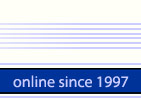The Evolution of Password Protection in Microsoft Office
The history of password protection in Microsoft Office reveals a fascinating journey from rudimentary security measures to sophisticated cryptographic systems. This evolution reflects both technological advancement and changing security requirements over three decades.
The Early Days: Simple XOR Encryption (Office 95 and earlier)
From the very first versions through Office 95, Microsoft employed an extremely primitive and unreliable encryption method. The document text was simply XORed with the password, which was reused multiple times throughout the encryption process. This approach made it trivially easy to recover the original password, often in mere seconds. The security was essentially illusory, offering minimal protection against even casual attempts at unauthorized access.
Office 97: The First Serious Attempt
Office 97 marked a significant turning point as Microsoft implemented serious encryption for the first time. However, due to U.S. export restrictions on cryptography exceeding 40-bit key lengths that existed at the time, Microsoft was forced to limit the encryption key to just 40 bits. This constraint severely compromised the potential security of the system.
The protection scheme in Office 97 was notably complex and implemented in two stages. It utilized two separate 40-bit keys: one universal key that worked for all documents encrypted with the same password, and a second, document-specific key that was considerably easier to discover. Our data center enabled us to offer a guaranteed service that cracked the document key in less than a minute, while the document content remained securely within the computer. For customers with numerous documents protected by the same password, we offered an additional service to find the master key. This tool enabled the decryption of all such documents.
Office XP (2002): Improved but Problematic
Office XP (Office 2002) introduced enhanced password protection capabilities, though the older, weaker scheme remained the default option. The new protection scheme suffered from poor implementation, frequently causing issues where users would receive "incorrect password" errors even when entering the correct password. These problems weren't actually related to the document or password itself, but rather to Windows configuration issues. Recovery specialists had to manually restore such files, which was possible when the correct password was known.
Office 2007: The Revolutionary Change
Office 2007 brought a radical transformation to password protection. Microsoft completely redesigned and significantly strengthened the security system. The new approach implemented computationally intensive password validation, deliberately slowing down the verification process. This design made brute-force password attacks exponentially more time-consuming and resource-intensive.
Since Office 2007, realistic password cracking requires cloud-based solutions with specialized hardware. The computational power of typical home or office computers can only handle the simplest and shortest passwords. A notable exception was Access 2007, which contained a critical vulnerability that allowed guaranteed database recovery regardless of password length. This security flaw was subsequently patched in Access 2010.
Office 2010 and 2013: Further Hardening
While maintaining the fundamental password protection architecture introduced in Office 2007, Office 2010 and later Office 2013 further increased the computational requirements for password verification. These iterations made password recovery even more challenging by implementing additional rounds of key derivation functions and increasing iteration counts.
Modern Era: Post-2013
Following Office 2013, Microsoft has made only minimal and non-fundamental changes to the password protection system. The current implementation remains robust, with the security level primarily dependent on password complexity rather than any inherent weaknesses in the encryption scheme itself. Today's Office password protection represents a mature, well-tested security implementation that effectively balances usability with strong cryptographic protection.
Key Takeaways
- Password protection evolved from trivial XOR operations to sophisticated key derivation functions
- Legal and regulatory constraints initially limited security capabilities
- Modern Office versions use computationally expensive operations to prevent brute-force attacks
- Current protection schemes remain effective when combined with strong passwords

